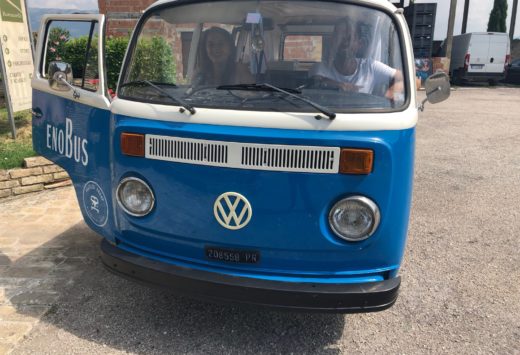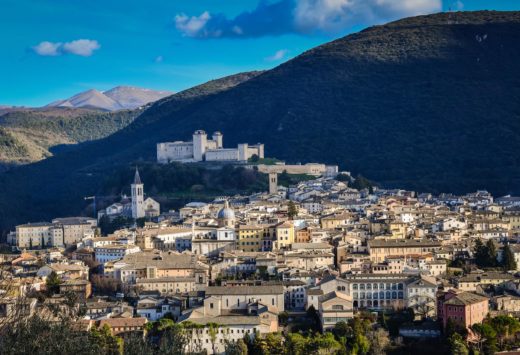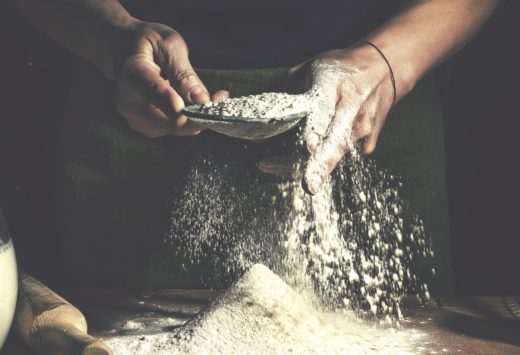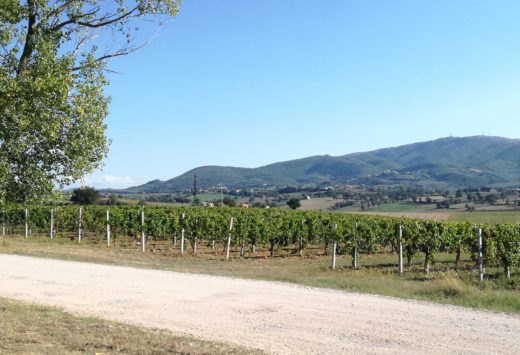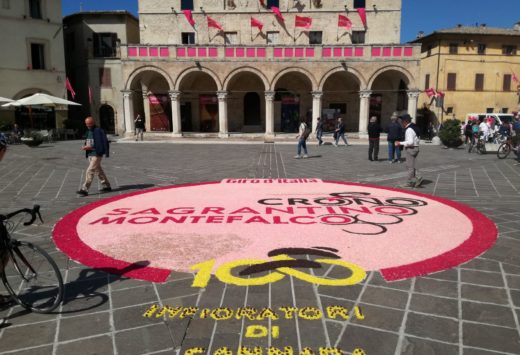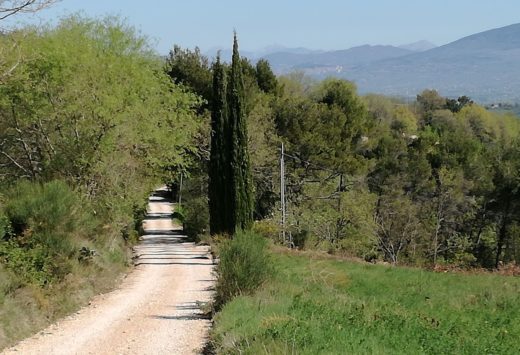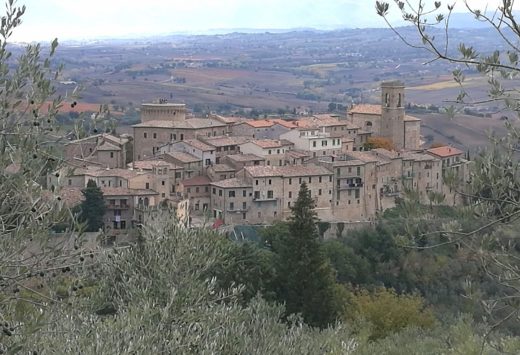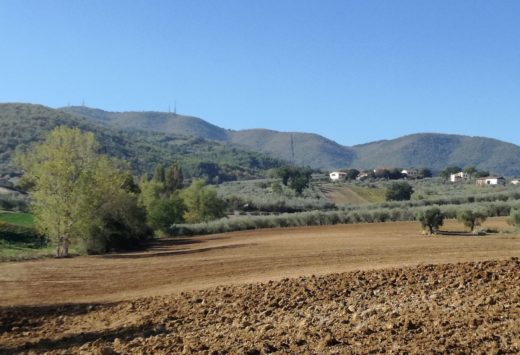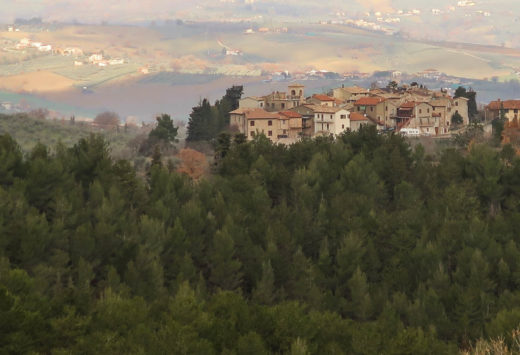Discover Trevi with us
The beauty of Trevi will take you by surprise even before you enter the ancient Roman and medieval walls of the village; you will already notice it, in fact, from the road you take to get there. You’ll immediately be entranced by this enchanting little village that climbs the hill below Monte Serano like a snail. The latter stands behind the village along with Monte Brunette, both covered with expanses of woods and meadows. The real spectacle, however, is the vast silvery mantle that surrounds the village: hectares of olive groves, Trevi’s real treasure trove. At the foot of the village, the valley extends outwards and is crossed by the river Clitunno, which played an important role in all the history of the city, even becoming a divinity and thus sacred in Roman times.
Trevi was in fact conquered by the Romans in 284 a. C., but its origins go back much further in time: prehistoric civilizations established themselves in its territory and later it was a city of the Umbri people, as evidenced by the archaic inscription on the recently-discovered stele di Bovara. Indeed, the name of the city dates back the language of this ancient population: to indicate urban agglomerations, they used the word ‘trebeit’. Legend links the etymology of Trevi to Diana Trivia, goddess of hunting, to whom the inhabitants of the city were very devoted; a temple dedicated to her is said to have stood on the top of the hill where the Duomo is now situated. In the imperial age, ‘Trebiae’ expanded and a real ‘civitas’ (settlement of citizens) arose in the plain, in the locality of Pietrarossa, giving rise to numerous monumental buildings. This development was made possible by the presence of the important Via Flaminia, which led to Rome, as well as the river Clitunno, which was navigable at that time.
The first bishop of the city was Emiliano, who is now the city’s patron saint, martyred under Diocletian: according to the Passio Sancti Miliani, he was tied to a young olive tree and beheaded; the olive tree, which is thousands of years old, still exists and is located three hundred metres from the Benedictine abbey of Bovara. It is the oldest olive tree in Umbria and has resisted the innumerable ‘galaverne’, or ‘frosts’, that plague the territory.
With the decline of Roman power, the citizens of Trevi decided to move from the plain to the hill, to be safer from the constant, intense earthquakes, and to defend themselves from barbarian invasions they built walls with three tiers of escarpment and no loopholes.
The village succumbed to the Lombard conquest and passed under the Duchy of Spoleto, until it became a free, Guelph, Commune in the 12th century; the Civic Tower, still visible today in Piazza Mazzini in the city centre is the symbol of the free municipality. In 1214 Trevi was razed to the ground by the Duke of Spoleto and subsequently allied to Perugia. According to ancient Franciscan literature, during this time St. Francis went to Trevi and performed a miracle. Following this event, construction began of the convent that currently houses the Museo di San Francesco and the Museo della Civiltà dell’Olio.
In the 1400s, the advent of mendicant orders gave rise to the ‘Monte di Pietà’ (institutional pawnbroker run as a charity) and various ‘grain mountains’ called ‘Monti frumentari’ to help poorer farmers, as well as numerous confraternities, such as the one that administered the city Hospice, which is located in a narrow alley on the left of Palazzo Comunale, and still preserves traces of 14th and 15th-century frescoes.
The periods of greatest splendour in Trevi were the Middle Ages and the Renaissance, characterized by flourishing trade, with oil playing a major role; the city became so important that it was called the ‘dry harbour’. The splendid noble palaces that we can still admire today were built in this period, and dynamic cultural activity developed. To encourage the circulation of money, Jewish bankers were called, leading to the creation of the Jewish quarter, whose distinctive features can be observed in the style of Palazzo Natalucci, a few metres from the square. A very important event was the founding of the fourth Italian printing works in Trevi and the leading printing press in the world, in 1470. In 1784 it was reinstated to the rank of city by Pope Pius VI.
One of the problems faced by Trevi over the centuries was access to a water supply. The problem was solved in 1928 thanks to the construction of the famous aqueduct, which carried water from the river Clitunno to the city. Before this important operation, the population of Trevi was served by communal city cisterns, while the richer families equipped their palazzi with personal cisterns: you can see one in the entrance hall of Palazzo Valenti, in Via San Francesco.
Trevi is one of the most beautiful villages in Italy, as well as a Bio (Organic) and Slow Food centre. It has been awarded the Orange Flag (quality Seal) by the Touring Club as well as Emas (Eco-Management and Audit Scheme) certification. Its most prestigious awards, however, is its qualification as a Città dell’Olio: Trevi has as many as 200,000 olive trees and is part of the DOP ‘Umbria’ Colli Assisi-Spoleto (protected designation of origin for its olive oil). The extra virgin olive oil produced here has an exquisite fruity, bitter and spicy flavour, is of the highest quality and boasts numerous beneficial properties. It is produced according to traditional methods and is used to accompany simple but delicious, tradition Umbrian dishes. Another local product is the Sedano Nero (literally ‘Black Celery’), which is typical of Trevi and is grown in the valley, where the soil is particularly fertile and where there was a lake several centuries ago. This Celery is protected and promoted by the ‘Slow Food’ movement and its cultivation is very ancient, with records dating it back to the 5th century BC. You can buy it in October, at the Mostra Mercato del Sedano Nero e della Salsiccia, or at the Mercato Contadino (Farmers Market) every fourth Sunday of the month, along with tasty chestnuts from Manciano, a hamlet of Trevi.
The city offers many opportunities for leisure and fun activities throughout the year: in addition to the Markets, you can taste Trevi’s famous oil, visit its oil mills, go trekking or attend open-air concerts during Festivol, held in November. At the end of April, there is a two-day festival called ‘Pic&Nic a Trevi’, involving art, music and snacks amongst the olive groves. Certainly the most important time for village life is Ottobre Trevano: for the whole month of October, Trevi comes alive, with taverns and inns opening in all the neighbourhoods, historical processions and scenes of medieval life, and above all the ‘Palio of the Terzieri’, an exciting competition between neighbourhoods. Another important occasion for the village is the highly evocative procession of the Illuminata, which has been taking place for eight centuries in honour of the patron Saint Emiliano. It’s also worth having a look at what shows are on at the Teatro Clitunno.





